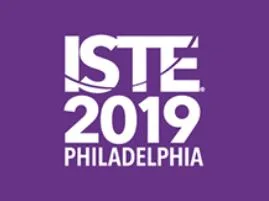The annual ISTE conference, the largest ed-tech conference in the U.S., is rapidly approaching, convening this year in Philadelphia. By examining the ISTE 2019 conference landscape through conference session analysis we can get a firm sense about what is trending in education. And this year there are some notable developments. Let’s zoom in on some of the trajectories emerging from this impending U.S. educational technology event.

The Expected
The typical and expected conference fare hasn’t really changed overall for ISTE 2019: we can expect about the same amount of limited footprint for some familiar priorities, such as online and blended learning, diversity and equity topics, assistive technologies for special needs students, games and gamification; and personalized learning. It’s all there.
The Standouts
Of course, “all-things-Google” stands as the predictable and clear winner for absolute world domination at ed-tech conferences (nothing new here—free stuff still wins the hearts of educators), but other topics are also stoutly represented in conference sessions this year: STEM, makerspaces (making, inventing, building–creating things with our hands and machines), VR, and AR (with AR still only representing about half of the sessions dedicated to its more popular cousin, VR.)
Trending and Noteworthy
All right, this is the good stuff, some developing stories that are truly significant within the education arena:
Coding. With more than 85 conference sessions slated, coding is the new conference darling. Coding was the top session offered at last year’s conference, thus reaffirming that this is no passing fancy. The coding revolution (aka programming, computational thinking, computer science) has finally elbowed its way in, finally standing alongside the big players in ed tech as an equal. The available options at ISTE 2019 for student coding, clear down to the primary grades, are mind-boggling and ubiquitous It has become big. Very big. This is perhaps a sign that coding is receiving renewed emphasis in U.S. schools, perhaps in an effort to compete with China’s recent decision to implement coding country-wide in their educational systems.
VR. Virtual reality is evidencing its strongest presence ever at an ISTE convention with over 66+ offerings this year. This echoes the phenomenon I saw in February at the TCEA convention in San Antonio (see my article about TCEA 2019). It is vital to note that more than 32 of these VR sessions focus on student-created VR and not on commercial VR offerings. That’s a remarkable benchmark—nearly half! And as mentioned above, VR still overpowers AR offerings by a 2-1 ratio in the number of sessions. I still don’t know why that surprises me.
AI. Sessions dedicated to the role of artificial intelligence in education have been slowly creeping upwards over the last two years, but this year the growth hit a pinnacle, with some 16 sessions on slate. That’s a huge jump, indicating a substantial interest in AI on the part of educators.
Esports. In past years, esports barely notched a presentation or two. This year, no doubt due to the rapid growth of school esport clubs, ISTE 2019 is featuring more than 6 esport offerings, representing a threefold increase. It looks like the education esport market is approaching faster than we thought.
Things are definitely getting interesting in the education space. –Len Scrogan

